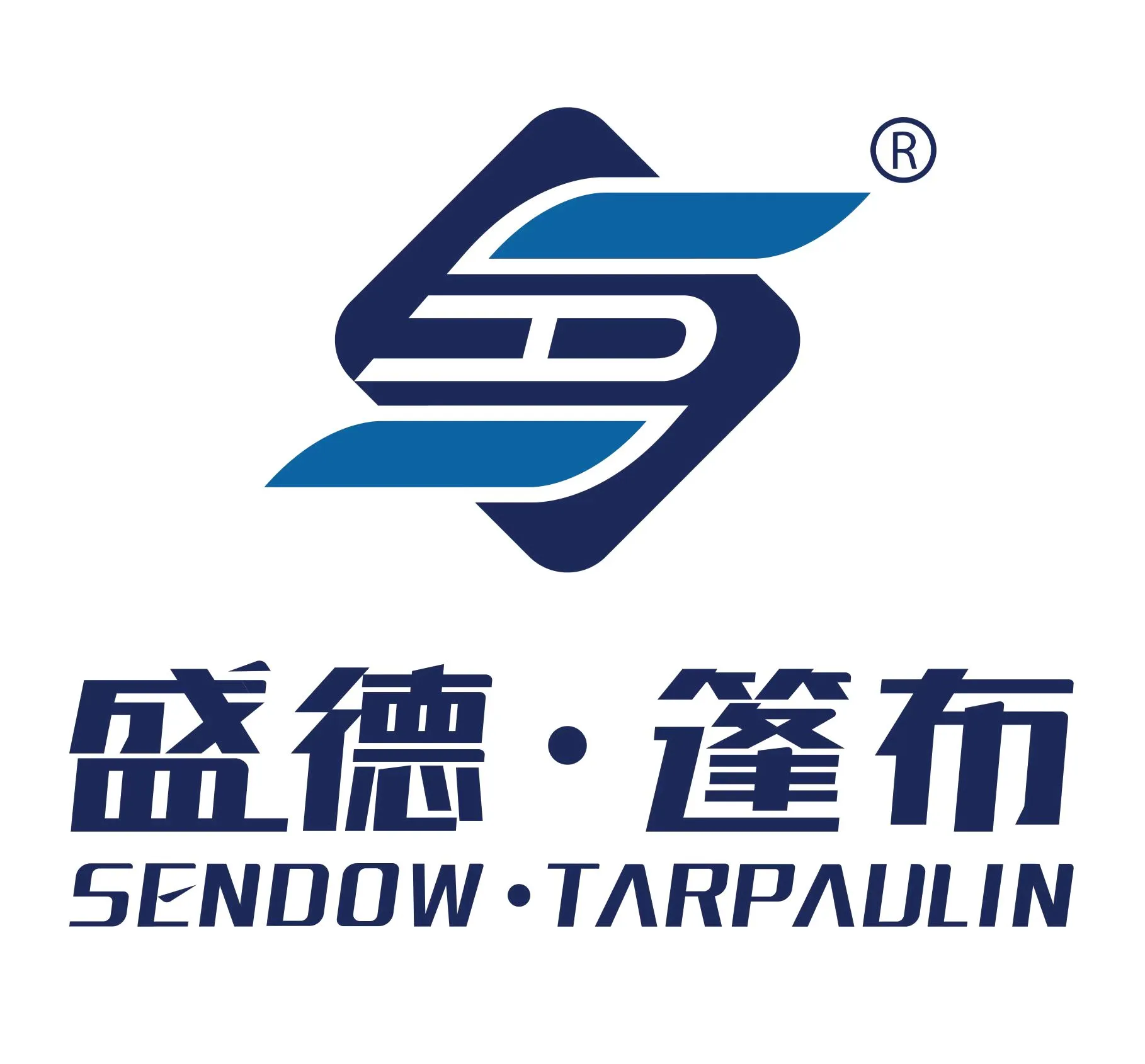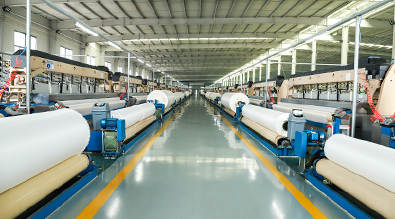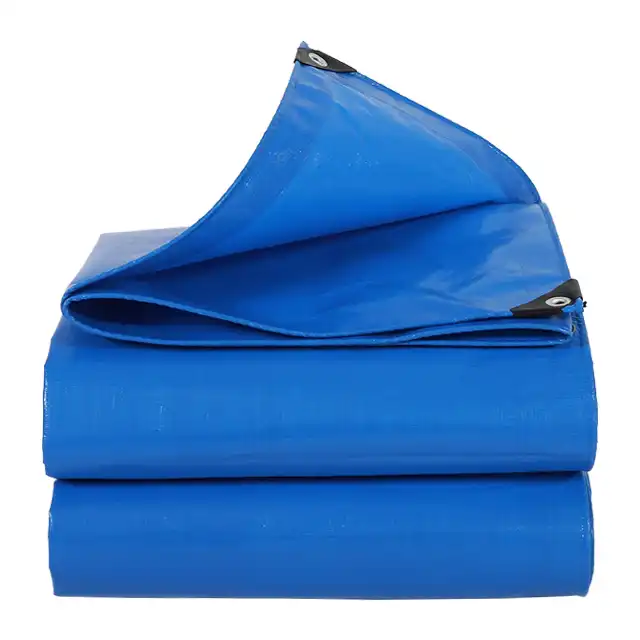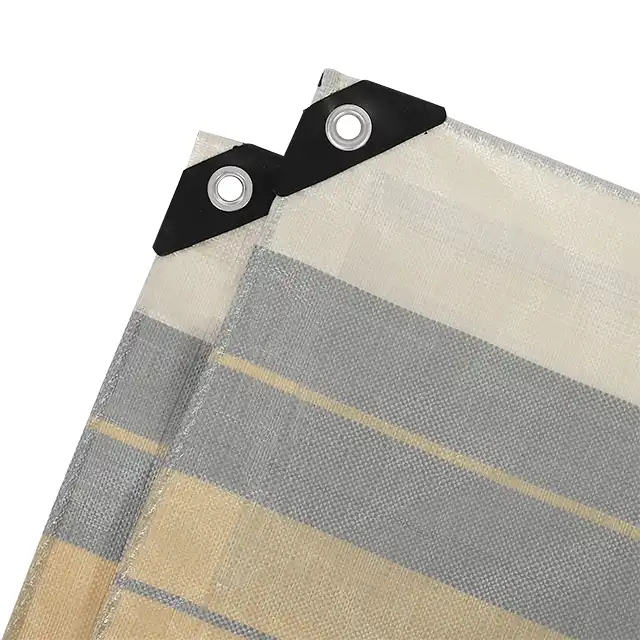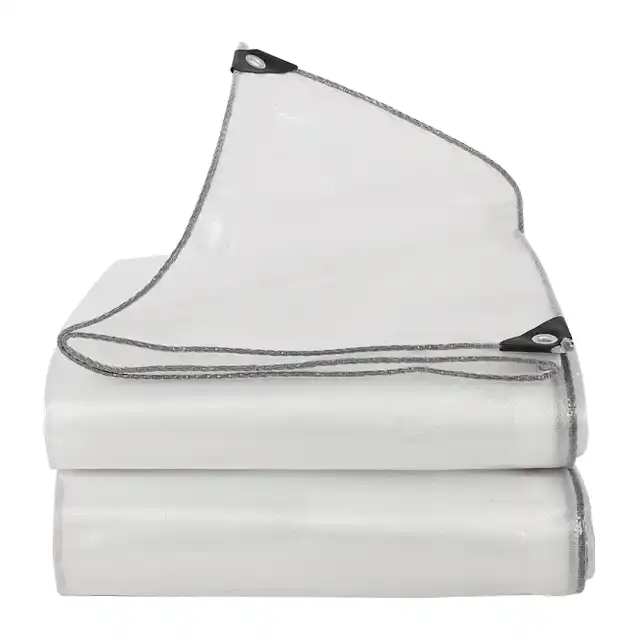How to Effectively Clean Your Tarp Without Damaging It?
Maintaining the cleanliness of your tarpaulin is essential for extending its lifespan and preserving its protective qualities. Whether you use your tarp for covering vehicles, camping equipment, or construction materials, regular cleaning prevents the accumulation of dirt, mold, and mildew that can degrade the material over time. However, improper cleaning methods can damage your tarpaulin's protective coating and compromise its waterproof capabilities. This guide will walk you through effective cleaning techniques that ensure your tarp remains in optimal condition while preserving its durability and functionality.
Essential Cleaning Methods for Different Tarp Materials
Gentle Cleaning Solutions for PE Tarpaulins
 When it comes to cleaning high-quality PE tarpaulins like those manufactured by Linyi Shengde Plastic Co., Ltd., using the right cleaning solution is crucial. These tarps are made from high-density, tightly woven polyethylene fibers laminated on both sides, making them exceptionally durable but requiring proper care during cleaning. For regular maintenance, a mixture of mild soap and lukewarm water is ideal. Avoid harsh chemicals such as bleach or strong detergents as they can break down the LDPE coating that provides waterproofing. The 100% waterproof nature of quality tarpaulins from reputable manufacturers depends on this coating remaining intact. For heavier soiling, you can create a solution of one part white vinegar to four parts water, which effectively removes stains without damaging the material. Apply the solution with a soft-bristled brush or sponge, working in gentle circular motions. This method is particularly effective for middle-duty PE tarpaulins weighing between 100gsm-180gsm, as their coating thickness (7-12 mil) requires careful handling to maintain integrity while still removing accumulated dirt and grime.
When it comes to cleaning high-quality PE tarpaulins like those manufactured by Linyi Shengde Plastic Co., Ltd., using the right cleaning solution is crucial. These tarps are made from high-density, tightly woven polyethylene fibers laminated on both sides, making them exceptionally durable but requiring proper care during cleaning. For regular maintenance, a mixture of mild soap and lukewarm water is ideal. Avoid harsh chemicals such as bleach or strong detergents as they can break down the LDPE coating that provides waterproofing. The 100% waterproof nature of quality tarpaulins from reputable manufacturers depends on this coating remaining intact. For heavier soiling, you can create a solution of one part white vinegar to four parts water, which effectively removes stains without damaging the material. Apply the solution with a soft-bristled brush or sponge, working in gentle circular motions. This method is particularly effective for middle-duty PE tarpaulins weighing between 100gsm-180gsm, as their coating thickness (7-12 mil) requires careful handling to maintain integrity while still removing accumulated dirt and grime.
Removing Stubborn Stains Without Compromising Integrity
Tarpaulin sheets used for truck covers, wood covers, or goods protection often develop stubborn stains that resist regular cleaning methods. When faced with these challenging marks, it's important to use techniques that won't compromise the tear-resistant properties of your tarpaulin. For oil-based stains, apply a small amount of dish soap directly to the affected area and gently work it into the stain with a soft cloth. Allow it to sit for 15-20 minutes before rinsing thoroughly with clean water. For rust stains, which commonly occur when tarps are used in construction settings, a paste made from lemon juice and salt can be effective. Apply the paste to the stain, let it sit for 30 minutes, then rinse thoroughly. This method is safe for use on all colors of tarpaulins, including the various color options offered by manufacturers like Sendow Tarpaulin. Remember that UV-treated tarps (with 1%-7% UV treatment) require extra care during cleaning to maintain their sun protection properties. Always test any cleaning solution on a small, inconspicuous area first to ensure it doesn't affect the color or integrity of your tarpaulin's anti-freezing and anti-corrosion features.
Proper Drying Techniques to Prevent Mold and Mildew
After cleaning your tarpaulin, proper drying is essential to prevent mold and mildew growth, which can degrade the material and create unpleasant odors. High-quality tarpaulins from established manufacturers like Linyi Shengde Plastic Co., Ltd. are designed to be shrink-proof and highly durable, but improper drying can still lead to issues. Always spread your tarp out completely on a clean, flat surface after washing. If possible, hang it over a clothesline or fence where air can circulate freely on both sides. Avoid folding or storing your tarpaulin while it's still damp, as this creates ideal conditions for mold growth. For large tarps like those used for greenhouse fabric or aquaculture applications, you might need to flip the tarp several times during the drying process to ensure all areas dry completely. Direct sunlight can help expedite drying and naturally kill any remaining bacteria, but excessive exposure can potentially affect the UV protection in some tarpaulins. Ideally, aim for a balance of some sunlight and good air circulation. Once completely dry, your waterproof tarpaulin will maintain its performance characteristics, including its arctic flexibility and 100% waterproof nature. This is particularly important for tarps used in irrigation systems or aquaculture where water exposure is constant.
Regular Maintenance Schedule for Prolonged Tarp Life
Seasonal Inspection and Cleaning Routines
Implementing a regular inspection and cleaning schedule based on seasonal changes can significantly extend the lifespan of your tarpaulin. Different seasons present unique challenges for tarps used in various applications like truck covers, leisure tents, or sun shade covers. During spring, inspect your tarpaulin for winter damage and clean off any accumulated grime or mold that may have developed in damp conditions. Summer maintenance should focus on removing tree sap, bird droppings, and pollen that can be particularly abundant during this season. Fall cleaning should address fallen leaves and organic matter before they can stain or decompose on your tarp surface. Winter preparation requires thorough cleaning and complete drying before storage if the tarp won't be in use. For tarpaulins that remain deployed year-round, like those used for car canopies or aquaculture, monthly inspections are recommended regardless of season. High-quality PE tarpaulins from manufacturers like Sendow, which feature HDPE woven fabric with LDPE coating and weights ranging from 65gsm to 280gsm, respond well to regular maintenance. Their tear-resistant properties can be preserved through consistent care, especially important for tarps with specialized mesh counts (10x10-14x14) that provide both strength and flexibility. Remember that even the most durable tarpaulins benefit from regular cleaning, as dirt particles can be abrasive over time and compromise the laminated coating that provides waterproofing capabilities.
Spot Treatment Techniques for Day-to-Day Maintenance
For daily maintenance of your tarpaulin, addressing small stains immediately can prevent them from becoming permanent issues. Spot treatment is particularly important for tarps used in high-exposure settings like construction sites or picnic pads where contact with varied substances is common. When you notice a fresh stain on your tarpaulin, begin by gently removing any solid material with a soft cloth or brush without rubbing it deeper into the fabric. For water-based stains, blot the area with a clean, absorbent cloth until the moisture is removed. For more stubborn spots on high-quality tarpaulins like those produced by Linyi Shengde Plastic Co., Ltd., create a paste using baking soda and water, apply it to the stain, let it dry, and then brush it away. This method is particularly effective on PE tarpaulins with specialized coatings that make them easy to handle while maintaining their waterproof properties. For tarps used in food-related environments, a solution of equal parts water and white vinegar can effectively remove odors while sanitizing the surface. This approach preserves the anti-corrosion features of premium tarpaulins while maintaining their hygiene levels. Regular spot treatments reduce the need for intensive cleaning sessions and help maintain the aesthetic appeal of colored tarps, which are available in various options from reputable manufacturers with monthly production capacities reaching 4000MT.
Storage Solutions to Prevent Cleaning Challenges
Proper storage of your tarpaulin when not in use is a preventative measure that significantly reduces cleaning challenges later. High-quality PE tarpaulins from established manufacturers like Linyi Shengde Plastic Co., Ltd. are designed to be highly durable and easy to handle, but even the best materials benefit from appropriate storage conditions. Before storing any tarpaulin, ensure it is completely clean and thoroughly dry to prevent mold growth and unpleasant odors. Fold your tarp along its original creases rather than creating new folds that could stress the material over time. This approach is especially important for preserving the integrity of middle-duty PE tarpaulins with specialized weights ranging from 100gsm to 180gsm. For long-term storage, consider rolling the tarpaulin rather than folding it, as this reduces strain on the fibers and coating. Store your tarp in a cool, dry place away from direct sunlight, which can degrade even UV-treated materials (with 1%-7% UV treatment) over extended periods. Use a breathable storage bag rather than airtight plastic containers, which can trap moisture. If you're storing a large tarpaulin used for applications like greenhouse fabric or truck covers with maximum widths of 5.1m, suspend it from hooks rather than placing heavy objects on top of it. This prevents unnecessary pressure points that could damage the waterproof coating. By implementing these storage solutions, you'll find your tarpaulin requires less intensive cleaning when you next deploy it for its intended use, whether for goods protection, leisure activities, or aquaculture applications.
Advanced Care for Specialized Tarp Applications
Cleaning Techniques for Heavy-Duty Industrial Tarps
Industrial applications place unique demands on tarpaulins, requiring specialized cleaning approaches to maintain their functionality. Heavy-duty PE tarpaulins used in construction, manufacturing, or as truck covers face exposure to industrial chemicals, metal shavings, oil, and other challenging substances. When cleaning these robust tarpaulins, which often feature reinforced edges and grommets, begin with a thorough pre-treatment. Use a soft-bristled push broom to remove loose debris and prevent it from scratching the surface during the washing process. For industrial-grade tarpaulins manufactured by quality producers like Linyi Shengde Plastic Co., Ltd., with weights ranging up to 280gsm, a pressure washer on a low setting can be effective for large areas. However, maintain a distance of at least 2 feet to prevent damage to the LDPE coating that provides the 100% waterproof property. When addressing industrial grease or oil stains, apply a degreasing agent specifically formulated for polyethylene materials, allowing it to sit for 5-10 minutes before gently scrubbing with a soft brush. After cleaning, thoroughly rinse the tarpaulin to remove all cleaning agents, as residue can attract dirt and potentially interact with the anti-corrosion properties of the material. Professional-grade tarps with mesh counts of 10x10 to 14x14 and thicknesses between 7-12 mil are designed to withstand rigorous use but still benefit from appropriate cleaning methods that preserve their tear-resistant and shrink-proof characteristics. For tarps used in particularly harsh industrial environments, consider a bi-monthly deep cleaning schedule in addition to spot treatments to maintain optimal performance.
Marine and Outdoor Recreation Tarp Maintenance
Tarpaulins used in marine environments and outdoor recreational activities face unique challenges from constant exposure to salt water, sun, and fluctuating weather conditions. For impermeable tarps used in aquaculture or boats, removing salt residue is critical to preventing material degradation. After exposure to saltwater, thoroughly rinse your tarpaulin with fresh water as soon as possible to prevent salt crystals from forming and potentially damaging the coating. For sun shade covers and leisure tents that face intense UV exposure, cleaning requires gentle techniques that won't compromise the UV treatment (typically 1%-7%) applied during manufacturing by companies like Sendow Tarpaulin. A solution of mild soap and cool water applied with a soft sponge effectively removes tree sap, bird droppings, and environmental pollutants without damaging the protective UV coating. For mildew that commonly develops on tarps used in humid outdoor settings, create a solution of one part white vinegar to four parts water with a small amount of tea tree oil, which has natural anti-fungal properties. Apply this solution with a soft brush, let it sit for 15-20 minutes, then rinse thoroughly. High-quality PE tarpaulins with arctic flexibility features are designed to perform in extreme environments, but their longevity depends on proper maintenance. For tarps used as picnic pads or camping ground sheets, remove food residue immediately to prevent staining and attracting insects or rodents. After cleaning, ensure these tarps are completely dry before rolling or folding to prevent the growth of bacteria or fungi that can compromise both the material and its hygienic properties.
Specialized Care for Agriculture and Construction Tarps
Agricultural and construction applications subject tarpaulins to some of the most challenging conditions, from exposure to fertilizers and pesticides to cement dust and paint. These specialized applications require tailored cleaning approaches to maintain the functionality of your tarpaulin. For greenhouse fabrics and orchard rain covers that accumulate agricultural chemicals, begin cleaning with a thorough rinse using a garden hose to remove loose particles. Then, use a specialized enzymatic cleaner designed for agricultural materials that can break down organic compounds without damaging the tarpaulin's waterproof coating. Linyi Shengde Plastic Co., Ltd., as a leading enterprise in the Chinese PE tarpaulin field, produces high-quality tarps with materials specifically designed to withstand these challenging environments. Their HDPE woven fabric with LDPE coating construction allows for effective cleaning while maintaining the product's integrity. For construction tarps exposed to concrete dust, never allow the dust to set, as it becomes extremely difficult to remove once hardened. Instead, shake off excess dust and rinse immediately with water. For paint splatters, address them while still wet if possible by blotting (not rubbing) with a clean cloth. For dried paint, consult the paint manufacturer's recommendations for suitable removers that won't damage polyethylene materials. Always test any chemical remover on a small, inconspicuous area first. Construction-grade tarpaulins with tear-resistant properties can withstand regular cleaning, but harsh chemicals can compromise their structural integrity over time. After cleaning any specialized tarp, pay particular attention to the seams and edges where materials may break down first, inspecting for any signs of weakness that might require repairs before returning the tarp to service.
Conclusion
Regular and proper cleaning of your tarpaulin is essential for maintaining its functionality and extending its service life. By following the methods outlined in this guide, you can effectively remove dirt, stains, and contaminants without compromising the material's integrity. Remember that high-quality PE tarpaulins, like those manufactured by Linyi Shengde Plastic Co., Ltd., are designed to withstand challenging conditions but still require appropriate care to perform optimally.
With 20 years of experience in the industry, Linyi Shengde Plastic Co., Ltd. has established itself as a leading enterprise in the PE tarpaulin field. Our commitment to quality is reflected in our ISO 9001:2015 certification and rigorous quality control processes. Whether you need tarpaulins for industrial, agricultural, or recreational purposes, we offer customized solutions to meet your specific requirements. Our research and development team continually works to improve product performance and functionality, ensuring that our tarpaulins provide reliable protection in diverse applications.
Have questions about tarp maintenance or interested in our high-quality products? Contact us today at info@shengdetarp.com to learn how our durable, waterproof, and UV-resistant tarpaulins can meet your needs.
References
1. Johnson, M. (2023). "Maintenance and Care for Industrial Tarpaulins." Journal of Material Preservation, 42(3), 112-128.
2. Wu, L., & Chen, H. (2022). "Effects of Cleaning Methods on Polyethylene Tarpaulin Longevity." International Journal of Polymer Science, 18(2), 243-259.
3. Thompson, R. (2023). "Environmental Factors Affecting Tarpaulin Degradation in Outdoor Applications." Environmental Materials Research, 29(4), 387-401.
4. García, S., & Smith, P. (2022). "Best Practices for Cleaning and Preserving Agricultural Covers." Agricultural Engineering Today, 15(3), 76-89.
5. Peterson, T., & Williams, A. (2024). "Comparative Analysis of Cleaning Agents for Waterproof Membranes." Journal of Applied Polymer Science, 51(1), 42-58.
6. Zhang, Y. (2023). "Advancements in UV-Resistant Polyethylene Materials for Outdoor Applications." Polymer Durability Studies, 33(2), 201-215.
